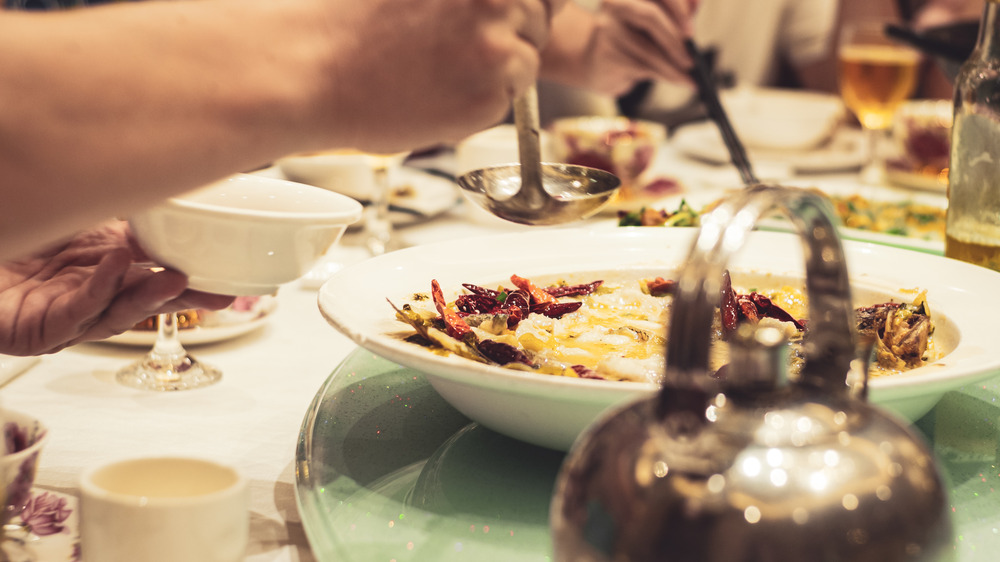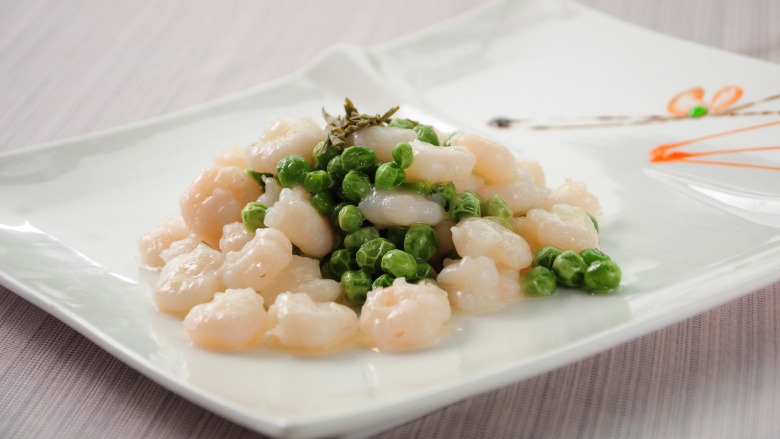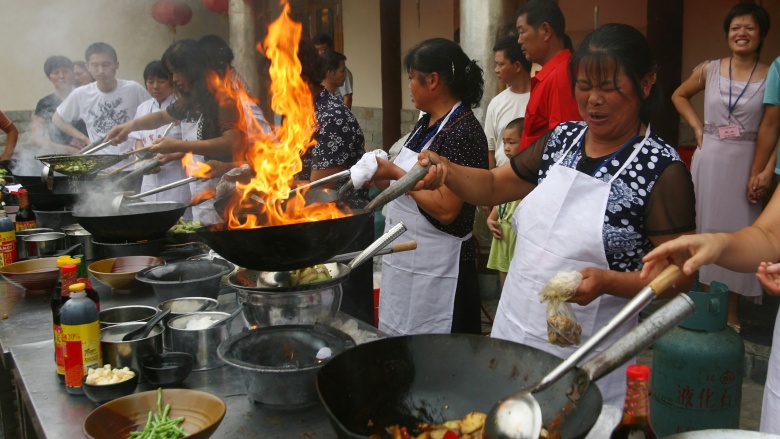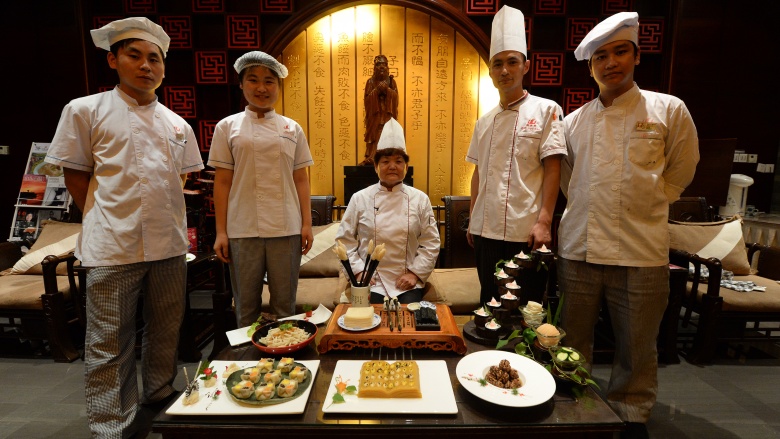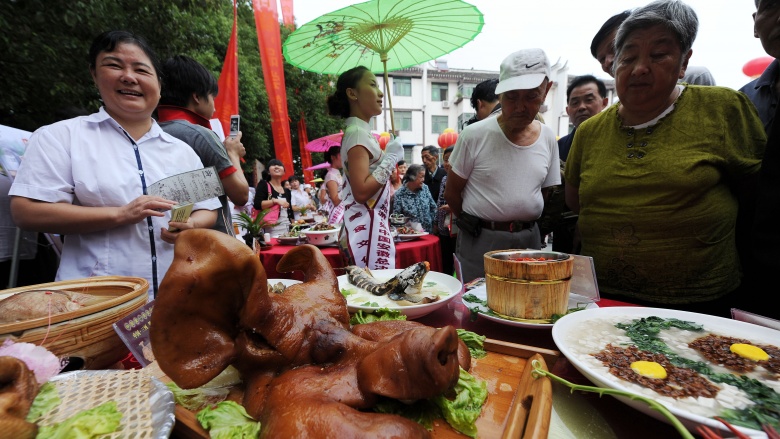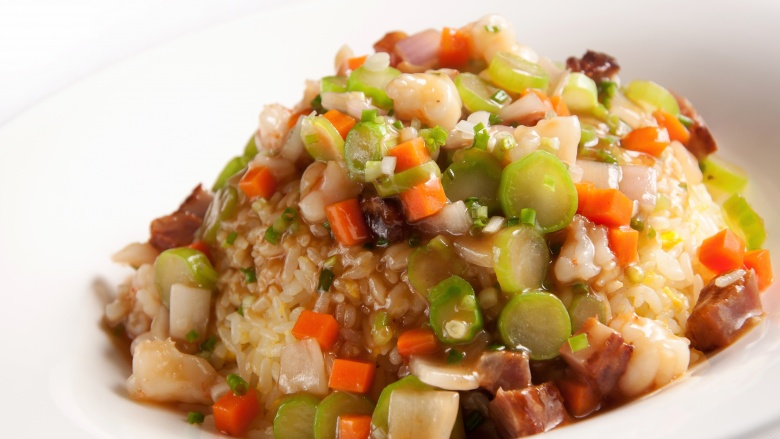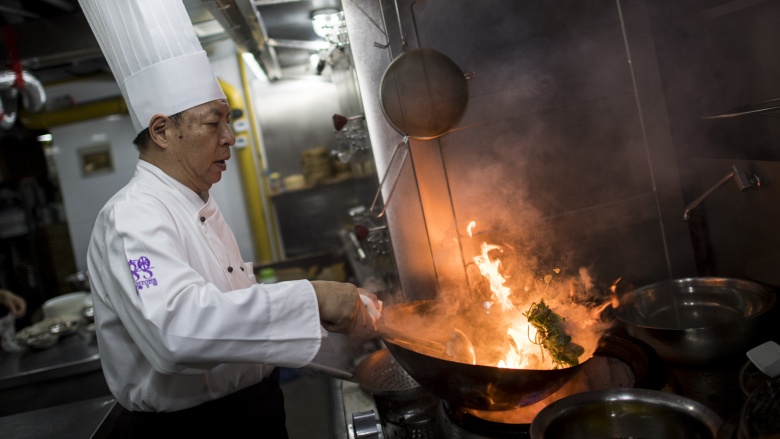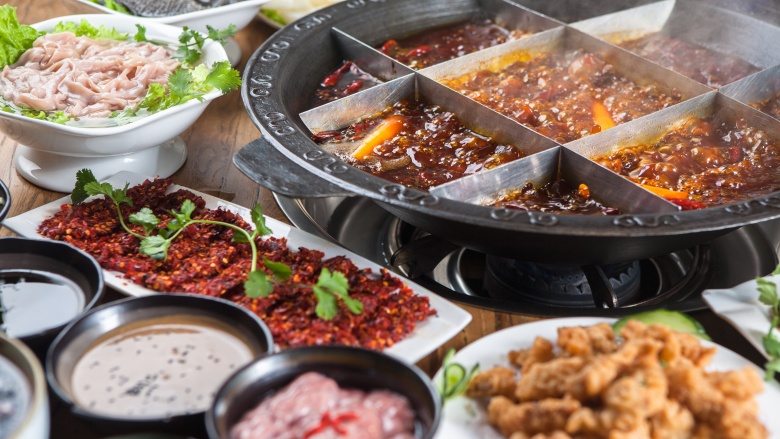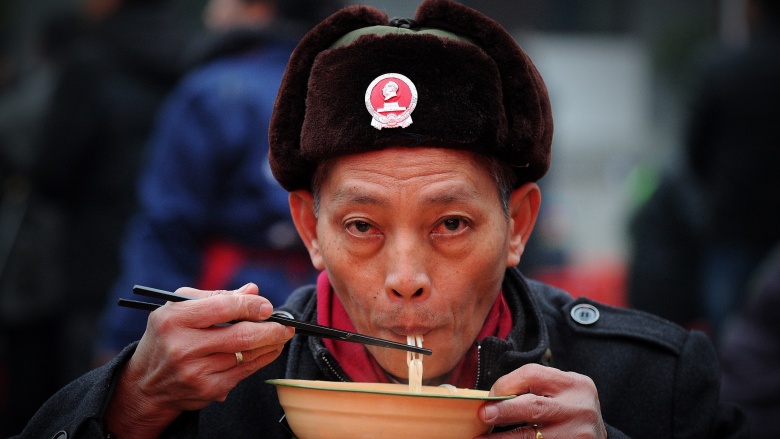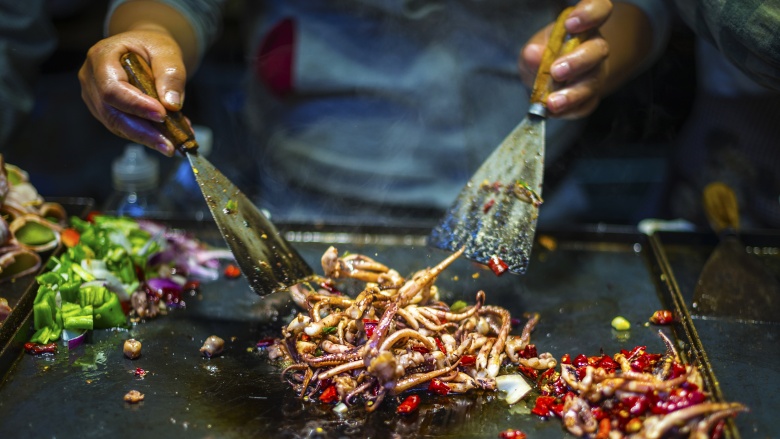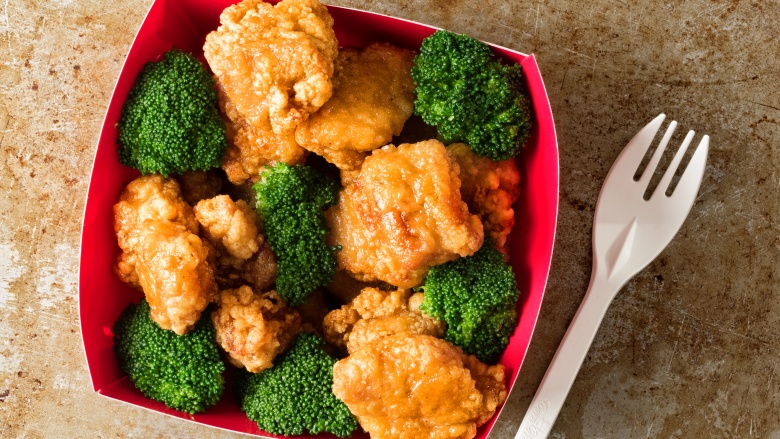Why There's No Such Thing As Chinese Food
Forgive me, dear reader, for the dramatic headline, but I have an argument to make. China is a huge country, with a long history and many varied topographies and climates. In fact, local cultures within the country vary so much that talking about "Chinese food" makes such as much sense as talking about "European food", as if tapas, haggis and pierogi were all part of one unified tradition. In fact, in China they recognize eight regional cuisines, but even those aren't enough to encapsulated all the culinary delights of the Middle Kingdom. And more than likely, some of the foods you consider to be "Chinese," aren't at all.
The next time you're talking about "Chinese food," dig a little deeper and consider what kind of food you're really talking about. Using the correct terms can help you gain a lot of insight about what you're eating, how it's cooked and where it came from — and it might also look like the smart one in the group the next time you're out for a meal with your friends.
Zhècài, Zhejiang cuisine
Zhejiang province boasts China's longest coastline and is home to many freshwater lakes, rivers and canals, and was traditionally known as part of the "land of rice and fish." The local markets overflow with a dizzying array of fish: yellow-fin croaker, golden snapper, mackerel, four-finger threadfin and mandarin fish, just to name a few. Zhejiang flavors are distinctively xian, fresh and delicious, and the food is oft compared to Japanese food with many dishes served raw or nearly raw. The locals consider the cuisines of other Chinese regions as cooked too hastily with overly strong seasoning that interferes with the natural flavors of the ingredients. There are three major sub-cuisines: Hangzhou cuisine, known for elaborate cooking techniques and common use of bamboo shoots, Shaoxing cuisine, famous for chicken and fish cooked in local wines, and Ningbo cuisine, known for its saltiness.
The region has a rich history which comes out in colorful stories told about each dish, such as Longjing Shrimp. Local legend has it an emperor of the Qing Dynasty disguised himself as a commoner to experience life in Hangzhou, and ended up having longjjing, or Dragon Well Tea, at the house of a local woman. He enjoyed the tea so much he stole a pocketful of the tea leaves, then went to an inn, ordered fried shrimp and gave the tea leaves to the waiter to brew. The waiter caught sight of the emperor's yellow imperial robes hidden under his sleeve and told the chef, who freaked out so badly he added the tea leaves to the shrimp thinking they were spring onions. Luckily for him, the emperor loved it.
Sūcài, Jiangsu cuisine
Zhejiang and Jiangsu cuisine are often lumped together as Jiangzhe cuisine, but I wouldn't recommend saying so around a local chef within reach of his knives. While both were made famous throughout the country thanks to the influx of visitors on the Grand Canal during the Southern Song dynasty period, Jiangsu food is less mild with stronger umami and sweet flavor notes. Local freshwater fish and pork are heavily featured, as well as tea leaves, mushrooms, bamboo shoots and locally produced Chinkiang vinegar.
The most prestigious variety of Jiangsu cooking is Huaiyang cuisine, known for its carefully selected ingredients and elaborate preparation requiring precise knife skills. The carving skills are vital in the creation of complex dishes like lion's head meatballs and squirrel-shaped mandarin fish, which look exactly like their names describe.
Originating from the region around the cities of Huai'an and Yangzhou, the style is distinctive in the use of common ingredients in uncommon ways. It's said a skilled Huaiyang chef can use a rice-field eel and create one of 108 different banquet dishes all featuring the eel. Huaiyang food was served at the first state banquet after the founding of the People's Republic of China, and during the Qing Dynasty it was more common for high officials to exchange chef recommendations than gifts, a kind of classy precursor to Yelp.
Lǔcài, Shandong cuisine
The cuisine of the Shandong peninsula is considered the mother of northern Chinese cooking, known for its wide array of ingredients and preparation methods. Seasoning is salt, soy sauce and most importantly scallions, aromatic but relatively mild. The results are greasy, crispy and tender with salty, sweet and sour flavors dominating. The most famous Shandong dish is sweet and sour carp, which must be caught from the Yellow River to be authentic. Under the influence of Confucianism, Shandong dining culture has developed strict etiquette for meals and banquets, determining seating arrangements and who gets to eat first (the oldest person, generally).
Shandong cuisine is further divided into the regional styles of Jinan, Jiaodong, and Kongfu. The provincial capitol of Jinan is known for its clear spring water and appropriately famous for soups, in both clear and creamy varieties made using chicken, duck and pork knuckles. The Jiaodong peninsula boasts seafood dishes of staggering variety, and local chefs have over 20 different ways to cook sea cucumber and more than 100 distinct recipes for flatfish alone.
Kongfu cuisine, or "dishes of the Confucian Mansion", focuses on culinary refinement and correct tableware, a reflection of the Confucian ideal of social peace and harmony. One famous dish is called zhuzi gongshi or 'pupils paying homage to the master', which includes dried bamboo leaves wrapped in smoked ham. The dried bamboo leaves represent the respectful disciples of Confucius, because zhuzi or bamboo is a homophone with zhuzi or pupil. The smoked ham represents Confucius, as apparently those who wished to study under him needed to present him with a piece of ham, an enrollment requirement sorely lacking in modern university systems.
Huīcài, Anhui cuisine
After the fancy-pants gastronomy in Jiangsu and Shandong, it can be nice to go for something more down-to-Earth. Anhui is a less-prosperous interior province with a tradition of hearty peasant fare characterized by heavy use of oil and starchy sauces, darker red-brown coloring and careful application of heat in the cooking process. Wild herbs and vegetables feature heavily, as do readily accessible and underrated sources of protein like local shrimp, turtles, rabbits, pigeons, civet cats, snails, whelks and frogs, as well as cured and salted meat. In ancient times, knowledge of Anhui cuisine spread with the merchants who once fanned out from the province across the country, but today the cuisine is less visible than that of more prosperous provinces.
As always, many local dishes come with colorful backstories. Take chouguiyu, or pungent mandarin fish. Legend has it an Anhui merchant far from home tasted the fish and found it so sweet and delicious, he immediately thought of his elderly parents. So he bought some of fish and took them home, but the journey was so long by the time they arrived the fish were a little worse for wear. Still, touched by her son's filial piety, his mother cooked the stinky fish anyway, and the results were unexpectedly delicious. A similar story relates to maodoufu, or furry tofu. A tofu maker fell ill and was bed-ridden for so long, his tofu was covered in white mold. He couldn't afford to waste it, but he couldn't sell it like that either. Solution? He deep-fried it, and his customers ended up loving the end result.
Mǐncài, Fujian cuisine
The cuisine of the southern Fujian province is defined by the abundant local seafood and the influence of the cooking styles brought by waves of settlers from the north: imperial households fleeing the collapse of the Western Jin Dynasty in the 4th century and similar groups fleeing the collapse of the Tang dynasty in the 9th century. This history is said to have given the region and its cuisine a defiant quality. Fujian cuisine is divided into three broad varieties: Fuzhou (fresher and milder), South Fujian (sweeter and hotter, with custard, orange juice and hot sauce used in flavoring), and West Fujian (saltier). All are similar in their use of local ingredients from the mountains and sea, and the importance of slicing techniques to improve the aromas and textures of the food. An important source of color and flavor in Fujianese cooking is red distiller's wine, made for a year until it becomes sweet and sour with a rose-red color.
The most famous Fujian dish is called Buddha Jumping Over a Wall, a stew considered to smell so delicious even the Buddha himself would jump over a wall to get a taste of it based on an old story of a traveling Buddhist monk or government official who did just that. The actual ingredients vary by chef, but may include quail's eggs, sea cucumber, abalone, dried scallops, ham, chicken, lamb, duck, fish maw, tripe, ginseng, wolfberries, rice wine, bamboo shoots and shark's fin. While there are serious ethical and environmental concerns with shark's fin soup, I can't help but admire such a charmingly sacrilegious name.
Yuècài, Guangdong or Cantonese cuisine
One common stereotype about Chinese people is that they eat everything, no matter how strange. This is only broadly true and not applicable to individuals, but the interesting thing is that, in China itself the stereotype is applied to people from Guangdong, said to "Eat anything with two legs except a ladder, anything with four legs except a table, and anything that flies except an airplane." Again, not true for individual people, but with some basis in fact. In ancient times, Guangdong was inhabited by the indigenous Baiyue people, whose dietary style was considered strange by later Chinese settlers, and their influence can be seen today in the continued popularity of ingredients like snake, cat (traditionally civet cat or leopard) and pangolin (scaly anteater).
Guangdong is a region where it's easy to cultivate a wide variety of edible plants and animals, and the Cantonese cuisine absorbed the influence of both other Chinese styles and those of the West through the historical trading port at Guangzhou. Various cooking styles are used, with steaming and stir-frying being preferred to retain natural flavors. Cantonese food is non-greasy and generally avoids heavy seasoning and relies on light sauces like hoisin, oyster, plum and sweet and sour, with local fresh ingredients preferred.
A less intimidating Cantonese culinary innovation is dim sum, inextricably linked with the tradition of yum cha or tea tasting. The tradition actually originated from tea-houses along with the old Silk Road serving snack food to weary travelers. In Guangdong, the tradition evolved into a raucous brunch of delicious steamed snacks, and via Hong Kong eventually spread around the world.
Chuāncài, Sichuan cuisine
Sichuan food, sometimes spelled Szechuan in the West, is associated with simple spiciness, but it's not so simple. Sichuan cuisine actually distinguishes many different distinct varieties of spiciness, including mala (numbing spicy), suanla (sour spicy), hula (dried chili spicy), yula (pickled chili spicy), xianla (fresh chili spicy), jiangla (chili sauce spicy), and hongyou (chili oil spicy). Mala is the spiciness most associated with Sichuan food, a combination of chili peppers and Sichuan peppercorns which induce a pleasantly numbing feeling in the mouth thanks to the chemical hydroxy-alpha sanshool which confuses nerve endings to produce a neurological reaction which some find alarming and others crave. But it ain't all about the mala.
Before chili peppers were introduced in the 17th century, Sichuanese were already exploiting the abundant sources of flavor in their subtropical river valley environment, including garlic, ginger, star anise, cassia bark (cinnamon) and black cardamom. Sichuan cuisine explores many different flavor profiles, hence the expression yicai yige, baicai baiwei: "Each dish has its own style, a hundred dishes have a hundred different flavors'. My favorite? Guaiwei, or 'strange flavor', a complex mix of arlic, ginger, scallion, dark rice vinegar, Sichuan pepper, and chili oil used to make cold dishes confusingly delicious.
Meanwhile, Sichuan hot pot is the king of all hot pots with its spicy oil and delicious dipping sauces. Thinly sliced meat, beef trip, duck intestines and lettuce are common ingredients, as they cook quickly and absorb flavor well. The style of cooking is believed to have originated with boat trackers from Chongqing, who huddled around boiling pots in winter days cooking cheap meat and eating straight from the pot. From humble origins, Sichuanese hotpot spread across the province, country and the world.
Xiāngcài, Hunan cuisine
Hunanese native and revolutionary leader Mao Zedong, who was rumored to sprinkle ground chilies on his watermelon slices, once said "You can't be a revolutionary if you don't eat chilies." The cuisine of sub-tropical and land-locked Hunan is the other great spicy food of China, with a big difference: they don't trick with fancy flavor complexities or mind-altering peppercorns. Instead they opt for bolder savory, spicy and sour flavors.
A Hunan staple is spicy, salty and sour duolajiao, vinegar-pickled chilies with salt used as a condiment with noodles or fish heads. Chili flakes, dried chilis and pickled chilis also see ubiquitous use. The commonly used cooking methods are steaming and braising. And they love fermentation, often employing douchi (fermented black soy beans) and labadou (winter sacrifice beans, or yellow soy beans, which are cooked, left to mold, then sealed in jars with salt, wine, and ginger until they reach peak umami). Meanwhile, smoked pork belly is such a tradition you can even find makeshift smokehouses in apartment buildings.
Hunanese cuisine can be further divided into three varieties: cuisine (pungent and fragrant), cuisine (hot, salty and poetically named) and West Hunan cuisine (heavy on smoked and cured meat and locally gathered fungi). Hunan's culinary history dates back 2000 years, but what they did before the chili was introduced is an enduring mystery.
And that's not all...
Those were the so-called Eight Great Culinary Traditions of China, and they barely scratch the surface. What about the food of the Hakka, the widespread group whose salty cuisine is said to compensate for the sodium lost through the sweat of a hard day's work? What about the fresh seafood and mild flavors of the island province of Hainan? Or Guizhou cuisine, which gives Sichuan and Hunan a run for their money with ubiquitous spiciness? In Jianxi, they use chili peppers as a vegetable rather than a spice and they cook almost exclusively in tea oil, which can cause stomach problems if consumed raw. Meanwhile, Shaanxi chefs know just what to do with a camel's hump, and are famous for flat noodles which are easy to say but extremely difficult to write down.
It gets even worse when you consider China's minority communities. Take the cuisine of Yunnan province for example. Of the 55 recognized ethnic minority groups in China, 51 of them live in Yunnan. This amounts to a staggering variety of different ethnic traditions, with influence pouring in from neighboring Tibet, Sichuan, and northern Thailand. Some of these traditions make heavy use of the abundant wild mushrooms, flowers, ferns, algae, and insects found in the region, and Yunnanese cuisine is unique in China for the use of yogurt and local cheese made by the Bai ethnic group.
There's also the Manchu staple diet of millet, corn, soybeans, and everything pickled, the butter tea and yak jerky of Tibet, the influence of the five snouts of Mongolian cooking, the doughy and delicious ways Chinese Muslims keep halal, the ingenious vegetarian and vegan fare of China's Buddhist zhaicai or 'purification cuisine', or the opulent modern recreations of the highlights of millennia of imperial eating. It pays to remember, when you're referring to Chinese food, you're literally referring to dozens and dozens of different cuisines.
Don't forget the diaspora
You also have to take into account the fact that many countries around the world have their own versions of Chinese food. They're accused of being inauthentic, which is sometimes fair. The Szechuan beef in the strip mall Chinese food buffet most likely won't reflect the complexities of the Sichuanese palate. But that's not appreciating the whole story.
Many American Chinese dishes seen as inauthentic were in fact invented by Chinese chefs for (mostly) Chinese customers. These early immigrants had limited access to the traditional ingredients, and so they made do with what they could get their hands on. This led to the rise of new dishes, like General Tso's Chicken, Egg Foo Young, and Orange Chicken. According to one legend, Chop Suey originated when a group of belligerent miners invaded a Chinese restaurant late at night demanding sustenance. The chef, who had closed for the night, went begrudgingly back to the kitchen and fried up what he had left in the kitchen, the shap sui ('bits and pieces' in Cantonese). The results were history. So American Chinese cuisine has a long and storied history, just as authentic as other Chinese cuisines. In fact, at least one restaurant in Shanghai had popularized what it boasts as authentic American Chinese food.
The situation isn't much different in other countries with their own Chinese diaspora populations. Chinese settlers in what is now Malaysia, Singapore, and Indonesia created Peranakan/Nyonya cuisine, which combined regional Chinese dishes with local ingredients like coconut milk, laksa leaves, lemongrass and tamarind. The results were predictably delicious. Meanwhile, in Korea the local Chinese food is ubiquitous and unique, a food tradition which originated from Chinese settlers in the Korean port city of Incheon across the water from the province of Shandong, who adapted northeast Chinese dishes to the local palate. Perhaps the best example is jajangmyeon, noodles with black bean sauce, an extremely popular dish in Korea which developed from the much milder, lighter and far less common Chinese dish zhajiangmian.
Everywhere you find the descendants of Chinese people from Japan to Jamaica, you will find localized dishes unknown back in the Middle Kingdom. And that's OK. There is no one true Chinese cuisine. You'll just have to try them all.
